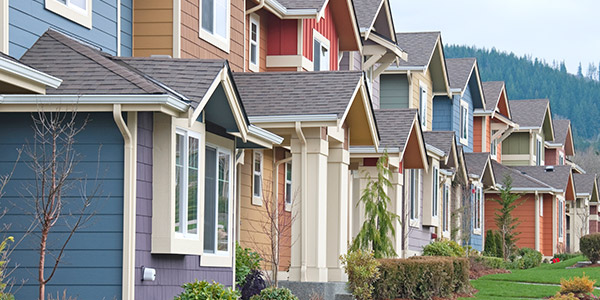Housing News
10 Top Housing Trends for 2019
December 4, 2018
With 2018 soon vanishing in our rear-view mirrors, it's time to peer into our crystal ball to gain a sense of the housing trends that will prevail in 2019.
Because projecting the future is an inexact science – despite the reams of statistical data we rely on to develop these erudite estimates – we offer only one ironclad guarantee: 2019 will arrive on schedule, January 1 at midnight.
Key Housing Areas to Watch in 2019
1. Interest Rates
Mortgage rates are scraping 5% now, sustained by a strong economy and the higher cost of imported goods.
Reflecting the economy's 10-year expansion, the Fed continues to normalize (raise) rates. Most experts are predicting the Fed will raise rates once more, in December, and at least three more times next year. Even with the recent and expected increases, interest rates are near historical lows.
Takeaway: If you believe gradual interest rate increases will continue, lock in your mortgage rate now.
2. Home Sales
As of this writing, existing home sales had fallen for six straight months but had a slight increase in October. Although a strong economy and low employment have put more money in people's pockets – which should point to an increase in home sales – these positive forces have not been enough to offset higher home prices and rising interest rates.
Takeaway: Despite softening sales, home prices keep going up. However, as houses take longer to sell, anxious and nervous sellers may be more willing to lower their prices in 2019, boosting sales.
3. Housing Prices
Although millennials are entering their prime homebuying age, there simply aren't enough entry-level homes for them to buy. As such, competition for affordable housing keeps pushing prices upward. Year-over-year appreciation, however, has begun to slow.
Takeaway: Get preapproved by a lender and contact a local real estate agent as early in the buying process as possible to ensure you can act fast on listings that catch your eye.
4. Loan Programs
Conscientious lenders continue to be resourceful in creating loan programs that improve affordability and accessibility for homebuyers. Innovations include down payment assistance and lender-paid buydowns.
According to the Mortgage Bankers Association (MBA), purchase originations are expected to reach $1.2 trillion in 2019, a 4.2% increase over 2018. Refinances are expected to reach $395 billion in 2019, a 12.4% decline from 2018.
Takeaway: Talk with your mortgage lender about your unique situation and goals. Their loan programs may help offset the predicted gradual rise in rates and housing prices. Rents are also going up, so buying could offer a more affordable housing option.
5. Confident Homebuyers
With the economy on a steady keel, buyers remain confident. "The unemployment rate is at its lowest level in 50 years resulting in faster wage growth and more confident homebuyers," MBA Chief Economist Mike Fratantoni said at the MBA's October 2018 Annual Convention and Expo in Washington, D.C.
Millennials, the largest population cohort, are entering their prime homebuying age. The second largest population segment, baby boomers, are looking to downsize, creating additional demand.
Takeaway: Competition for housing shows no sign of easing, which will continue to push prices higher in certain markets.
6. New Home Construction
Builders can't build them fast enough, constrained by rising land, labor, material costs, and NIMBY (not-in-my-backyard) opposition in some communities afraid that new development will lead to overcrowding, congestion, and other high-density ills.
Takeaway: Limited supply in the face of high demand will continue to stoke higher prices, meaning you're likely to pay more for a home a year from now than you will today, in certain markets.
7. Housing Square Footage
Median square footage peaked at 2,467 square feet in 2015, inching down to 2,426 in 2017. Behind the trend are smaller millennial families – including more childless millennial homebuyers – and a rising number of empty nesters, who have less need for four- and five-bedroom houses. Plus, homebuyers are purchasing homes with smaller footprints in a nod toward sustainability and minimizing the impact on our natural resources.
Takeaway: This downsizing trend is expected to continue as builders better utilize space and more potential buyers discover they don't need to live in McMansions to find housing happiness.
8. Homeownership Rate
According to the Joint Center for Housing Studies' "State of the Nation's Housing 2018" report, homeownership rates have stabilized at about 64%. Homeownership rates are expected to keep nudging higher, despite mounting interest rates and housing price headwinds.
Takeaway: Renters – aided by several low down payment mortgage programs – will continue to find ways to buy a home.
9. Reverse Mortgages
With 10,000 more baby boomers turning 65 every day, many boomers who own their homes or have small remaining mortgages are turning to Home Equity Conversion Mortgages (that's the official name of these FHA-insured loans), as a retirement strategy that allows them to access a portion of their home equity and continue living in their home for as long as they live without ever having to make another mortgage payment.
Takeaway: If you are 62 or older, it may be worth your while to talk to a mortgage lender to see if this retirement tool is right for you. While reverse mortgages allow you to tap your home equity and continue living in your home without ever making another mortgage payment, you must continue to maintain your property and pay all property taxes, home insurance, and associated home association dues.
Takeaway: Demand for these loans is expected to grow in 2019 as more seniors seek ways to supplement retirements that are currently underfunded.
10. Hot Housing Markets
When the economy is good, people want to buy homes, and that is proving especially true in the West, where Zillow predicts 8.1% growth for Seattle, 7.7% for Los Angeles, 6.4% for San Diego, and 6.2% for San Francisco in 2019.
Takeaway: Price per square foot drops the farther you move away from the coast.
Current data and statistics are not an indication of future performance. Economic headwinds and tailwinds can rise or die down in an instant. Rather than putting all your faith in economic forecasts and projections, devote as much time to pinning down your own needs and wants and come up with a plan that you believe will help you reach your long-term goals.





 Smart Moves Start Here.
Smart Moves Start Here.